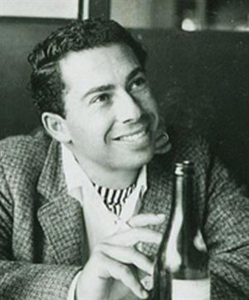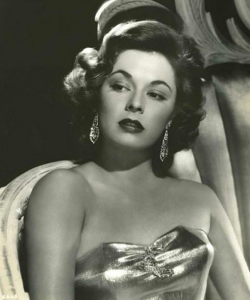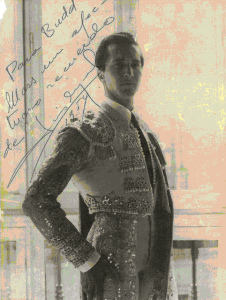Budd Burton Moss is an old school Hollywood talent agent and part of a family dynasty that made magic in the Motion Picture industry. His father Louis B. Moss was a film editor at Fox, later becoming 20th Century Fox when it merged with Darryl F. Zanuck’s 20th Century Pictures. During Hollywood’s Golden Age, Budd’s mother’s brother Sam Zimbalist, produced films for MGM Studios, many acclaimed as the best films of all time.
Zimbalist was good friends with power couples Clark Gable and Carole Lombard, and Spencer Tracy and Katherine Hepburn. Moss recalls being at his uncle Sam’s house on weekends and hearing the actors read scripts aloud and playing tennis or swimming in the pool.
Budd Moss and his brother David were born in the shadows of Hollywood Boulevard. Being products of Los Angeles when the Motion Picture Industry rode the uncontested magic carpet, they can very well understand the intricacies of the Hollywood scene better than most newcomers.
Budd Burton Moss and I connected on Face Book as I knew his brother David in Spain. He commented upon reading my recent ALIVE Magazine D-Day article that he was co-producing a film, Mother of Normandy, about Simone Renaud who lived in Sainte Mere-Eglise. It was where many paratroopers in the 101st and 82nd Airborne Division died when they dropped behind enemy lines during the 1944 Invasion of Normandy.
Hollywood über-agent Moss has chronicled his experiences in a memoir; …And All I got was Ten Percent—What it’s Like to be a Famous Hollywood Agent. His close friend Larry King wrote the book’s introduction which guarantees to entertain film aficionados with titillating insider accounts of Hollywood and revelations of once-guarded secrets.
Moss paints a rich portrait of Hollywood before the monolithic studios fell to indie mavericks. He opens his book with the account of his daily business breakfasts in Nate and Al’s Deli in Beverley Hills where film industry veterans kibbutz about the good old days. “Who’d you sign?”
Budd Burton Moss had the right connections; a direct pipeline to studio heads and those who decided which scripts to deep-six and which to produce for the silver screen. Sam Zimbalist, iconic movie mogul and MGM head honcho, had offices in the Thalberg Building on the studio lot. Zimbalist expected his nephew Buddy to segue into film producing, but he wanted to act in films, not produce them.
And Moss dreamed of becoming a matador. It had all started as a pubescent when he became smitten by Rita Hayworth in the bullfighting saga Blood and Sand. Imbued with desire for the beautiful femme fatale, he decided to become an actor and a matador. Moss may not have been a match for Anthony Quinn or Tyrone Power, but he gave it his best shot and later they became friends.
Unbeknownst to the rooky Buddy Moss, he was later to become Rita Hayworth’s agent and close friend, and his youthful dream was fulfilled when they traveled to Europe together.
VANISHING HOLLYWOOD
While Budd Moss was at college as a Theatre Arts major, he took a job at Duke’s Union 76 across from MGM Studios. The teenager serviced the cars of the stars and at day’s end delivered the shiny gassed up motor cars to Clark Gable, Spencer Tracy, Elizabeth Taylor, June Allyson, Esther Williams, and Judy Garland et al. One can only imagine them flipping the teenager a two-bit tip, and Buddy catching the silver coin in the air with an adoring smile. “MGM had more stars than heaven,” he says sentimentally.
Moss recalls the early days when cowboys rode horses down Hollywood Boulevard in the hope of getting parts in Roy Rogers or Gene Autry movies, and the Indians who came down from Cahuenga Pass and sold beads from spread-out blankets on the corner of Hollywood and Vine. He recalls being awestruck when meeting Fred Astaire and Cyd Charisse, the latter becoming his client, and others he catapulted to stardom. Moss reminisces how his parents packed him and David in their Model A sedan and drove from West LA into Hollywood for Saturday double features, then hung out on the Hollywood Hotel verandah where Rudy Valentino and Mary Pickford once may have passed.
High school buddies were Linda Darnell’s brother Calvin, Academy Award winner Joel (Katz) Grey, and Bobby Blake who gained fame as the killer in Truman Capote’s In Cold Blood.
After the garage gig Moss bussed tables at Fox Studios restaurant where he met Marilyn Monroe, Ty Power, Bette Grable, and Henry Fonda and got close to the beauty of his dreams, Rita Hayworth lunching with Studio boss Darryl F. Zanuck.
Budd’s odd jobs lead to film work, and was ecstatic when he got his SAG extra’s card. He reported to Central Casting and got a dance number gig in It’s a Wonderful Life, with Jimmy Stewart, and later a part in Blackboard Jungle, with Sidney Poitier. “Not bad for my first films,” said Budd.
To hone his acting skills, Budd did summer stock along with other neophytes James Coburn, Hugh O’Brian, Robert Vaughn. And at “The Rack” bar he drank with a lanky guy who had just gotten out of the service and earned his way as a carpenter and pool digger. That shy guy went far in Hollywood; Clint Eastwood was to become one of the world’s leading Box Office draws of all time.
When his father, Lou Moss, left Fox, he and wife Shirley (Zimbalist) opened a restaurant. The Matador Bar decorated with Manolete bullfight posters, with a definitive macho ambiance, was the dwelling of pure California cool, where Tony Quinn, Lloyd (Bud) Bridges, Robert Taylor and Gilbert Roland rubbed elbows with bullfighters and other Hollywood icons.
When Budd wasn’t running the busy bar of the family restaurant, he worked in films. He recalls his entire body being burnished with brown make-up for bit parts in the 1954 epic, The Egyptian, with Edmund Purdom. “I was killed several times in one day.”
During the Korean War Moss enlisted in the Air Force and was stationed at Parks Air Force Base, now called Camp Parks in Dublin, California. It was just a matter of time before he was recruited to Special Services Units to produce plays and entertain the troops.
Ironically it was there he first met USO entertainer Barbara Eden, whom he later signed to star in I Dream of Jeannie. He returned to LA after the Air Force stint and to a life of incredible excitement.
Tony Quinn introduced him to the actress Ruth Roman, a beautiful older woman whose marriage was rocky. As fate would have it, he and Ruth fell madly in love. Ruth was a seasoned actress having starred in Hitchcock’s Stranger on a Train, and had dated Ronnie Reagan when they were contract players at Warner Bros. The rest of their love story reads like the script of a Hollywood melodrama.
Ruth Roman had to wind up filming final scenes with Akim Tamiroff in France. To return stateside she and her three-year old son Dickie boarded a luxury liner in Cannes for the transatlantic crossing. That July of 1956, as the “S.S. Andrea Doria” liner was passing the Nantucket coast and edging towards New York in thick fog, her midriff was gored by the liner “M.S. Stockholm” en route to Sweden.
Over fifty people died in the collision, half the starboard-side lifeboats went down on impact. Rescue ships, including the “Ile de France,” rushed from New York harbor; planes flew overhead capturing the disaster on film, and darkness made rescue difficult. The ship sank to the bottom of the sea within hours. Ruth Roman’s son was lost. Lifeboats were lowered. She was taken ashore still frantically searching for her boy. She called Budd Moss in LA.
Finally her son was located on the “Stockholm” and taken to the hotel. Budd Moss booked a flight from California, arrived in New York at her hotel the next day. They needed to be together; romance flourished. They stayed in New York negotiating her role in the play Two for the Seesaw. They later moved to her Rockingham Road house in Brentwood and spoke of marriage. They sailed to Panama and married in a storied ceremony worthy of a full chapter.
Roman’s work took them to Spain until 1958 when she starred with Richard Burton in Bitter Victory. Madrid was then the filming epicenter of several sword-and-sandal epics and was teaming with LA Studio executives and Hollywood stars.
Being avid aficionados, Budd and Ruth hung out at the flamenco Corral de Moreria and mingled with the bullfighting crowd. They were friendly with toreros Luis Miguel Dominguin and his brother-in-law Antonio Ordonez. Dominguin, not only gained fame in the bullring, but also as Ava Gardner’s paramour. Hemingway was in town too writing about the dueling toreros in The Dangerous Summer for Life Magazine, believed to be his last work.
TEN PERCENT STARMAKER
After their sojourn in Spain, Budd Moss launched his career as a talent agent and joined Marty Baum’s agency in 1959 in LA. He built an impressive repertoire of clients; Rita Hayworth (Gilda), Cyd Charisse (Singin’ in the Rain), Robert Vaughn (Man from U.N.C.LE.), Karl Malden, and June Allyson. In 1992 Burton Moss Agency merged with boutique Shapiro-Lichtman Literary Agency bringing with him client MPAA president Jack Valenti whose novel, Protect and Defend, soared to bestseller.
Over the span of his illustrious career, Moss had placed Dyan Cannon in Bob, Carol, Ted and Alice; Sally ‘Hot Lips’ Kellerman in M*A*S*H; Tom Bosely in Happy Days; nose-wiggling Elizabeth Montgomery in Bewitched; and Mia Farrow in Peyton Place.
The business took much of Budd’s time away from Ruth Roman and the marriage became strained. Perceiving that he may be having an affair, and knowing that Budd valued his $500 Harry Cherry custom-tailored suits, she cut them to ribbons and burnt them in the fireplace. After six tumultuous years the marriage went south.
Budd concentrated on his business as a premier Hollywood Motion Picture and Television agent with General Artists Corporation and represented some of Hollywood’s most bankable clients. When he suggested Mia Farrow for Peyton Place he was also instrumental in setting her up with future husband Frank Sinatra.
Moss worked with then-actor Aaron Spelling’s wife, Carolyn Jones, Morticia in the Addams Family. While Moss represented Jones at GAC he placed her in a poignant role in Dr. Kildare in 1963. Her marriage to Spelling was heading for the rocks and Budd and Carolyn started dating. They became engaged and celebrated with an Addams Family-themed party. After she went on tour, they grew apart.
Years later as head of Burton Moss Management he suggested Melvin Belli to Coppolla for the part of Vito Corleone in The Godfather but was beaten out by Marlon Brando.
His friendship with Melvin Belli, King of Torts, lead to his getting married to his present wife Carolyn on the verandah of Belli’s San Francisco penthouse with Sidney Poitier as best man. Moss’ page-turner memoirs reveal Hollywood backstories like when he clinched a $10,000 per week guest spot for
Shelly Winters on the Ben Casey TV series. She had just won an Oscar for her performance in Diary of Anne Frank and was a hot property. At her Chateau Marmont suite she vehemently stated she was worth more than 10K a week and the über-agent had to handle the fading star with kid gloves.
Budd reminisces about Hollywood’s Golden Era and writes about his beloved uncle, Sam Zimbalist who died in November 1958 during the filming of the epic masterpiece Ben Hur in Rome. Zimbalist had produced some of Hollywood’s best films; Tortilla Flat, King Solomon’s Mines, Thirty Seconds Over Tokyo and Quo Vadis.
Sam Zimbalist died of a heart attack hours after filming the iconic chariot race scene in Ben Hur at Rome’s Cinecitta Studios. He was in stressful negotiations to secure five million dollars more for the MGM picture. Ironically he died immediately after the intense chariot race scene when Charlton Heston drives four white horses against nemesis Stephen Boyd’s four black stallions and he becomes impaled by the wheel spikes. Sam Zimbalist won a posthumous Best Picture Oscar for Ben Hur with a record-breaking total of eleven Oscars. The film epic is acclaimed as one of the best films of all time.
In Budd Burton Moss’ memoirs, he paints a cinematic picture with words cutting to the core of Hollywood’s Golden Era—an era that is no more. The once-monolithic movie-making industry has yielded to multi-million dollar productions, CG-enhanced mega films, and low-budget indies that appeal to a different kind of audience—a youth-oriented audience that yearns for fast-paced action. Moss tells it like it was. And it was great.
Gone are the days that Hollywood had a terra firma sense of place. Now “Hollywood” is a mythical Xanadu, an ephemeral Shangri-La fantasy that can be anywhere on earth, even in our dreams. Movie deals are different now; androgynous terms have broken the mysterious myth of movies. Gone are the days that hedonistic star makers longed to rendezvous with ingénue starlets over three-martini lunches and when, but a forbidden kiss, was a powerful aphrodisiac.
…And All I Got Was Ten Percent! By Budd Burton Moss, is available as an e-book available on Amazon.com
Such an interesting article and fascinating background – looking forward to reading more about this.
Last time i was in LA several years ago I ended up at a SAG picnic for NO campaign (quite randomly) – but got a chance conversation with France Nuyen (albeit brief) – that memory has stuck: perhaps some day another chance meeting; who knows!
HELLO DARLENE, HERE IS A REVIEW OF MY FIRST BOOK BY ANITA VENEZIA JUST IN CASE YOU DON’T HAVE TIME TO READ THE BOOK.
WARMLY BUDD MOSS